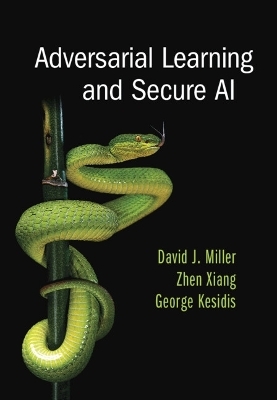
Adversarial Learning and Secure AI
Cambridge University Press (Verlag)
978-1-009-31567-8 (ISBN)
Providing a logical framework for student learning, this is the first textbook on adversarial learning. It introduces vulnerabilities of deep learning, then demonstrates methods for defending against attacks and making AI generally more robust. To help students connect theory with practice, it explains and evaluates attack-and-defense scenarios alongside real-world examples. Feasible, hands-on student projects, which increase in difficulty throughout the book, give students practical experience and help to improve their Python and PyTorch skills. Book chapters conclude with questions that can be used for classroom discussions. In addition to deep neural networks, students will also learn about logistic regression, naïve Bayes classifiers, and support vector machines. Written for senior undergraduate and first-year graduate courses, the book offers a window into research methods and current challenges. Online resources include lecture slides and image files for instructors, and software for early course projects for students.
David J. Miller is Professor of Electrical Engineering at the Pennsylvania State University. Zhen Xiang is a post-doctoral research associate in Computer Science at the University of Illinois, Urbana-Champaign. George Kesidis is Professor of Computer Science and Engineering, and of Electrical Engineering, at the Pennsylvania State University.
Contents; Preface; Notation; 1. Overview of adversarial learning; 2. Deep learning background; 3. Basics of detection and mixture models; 4. Test-time evasion attacks (adversarial inputs); 5. Backdoors and before/during training defenses; 6. Post-training reverse-engineering defense (PT-RED) Against Imperceptible Backdoors; 7. Post-training reverse-engineering defense (PT-RED) against patch-incorporated backdoors; 8. Transfer post-training reverse-engineering defense (T-PT-RED) against backdoors; 9. Universal post-training backdoor defenses; 10. Test-time detection of backdoor triggers; 11. Backdoors for 3D point cloud (PC) classifiers; 12. Robust deep regression and active learning; 13. Error generic data poisoning defense; 14. Reverse-engineering attacks (REAs) on classifiers; Appendix. Support Vector Machines (SVMs); References; Index.
| Erscheinungsdatum | 22.08.2023 |
|---|---|
| Zusatzinfo | Worked examples or Exercises |
| Verlagsort | Cambridge |
| Sprache | englisch |
| Maße | 174 x 251 mm |
| Gewicht | 860 g |
| Themenwelt | Informatik ► Netzwerke ► Sicherheit / Firewall |
| Informatik ► Theorie / Studium ► Künstliche Intelligenz / Robotik | |
| ISBN-10 | 1-009-31567-6 / 1009315676 |
| ISBN-13 | 978-1-009-31567-8 / 9781009315678 |
| Zustand | Neuware |
| Haben Sie eine Frage zum Produkt? |
aus dem Bereich


